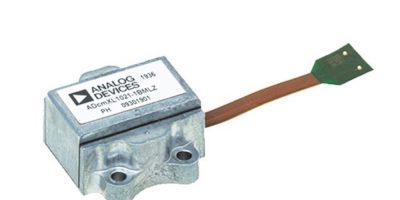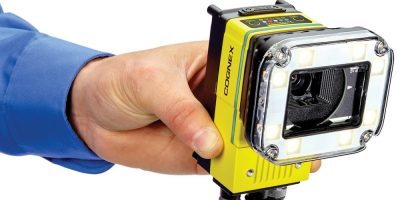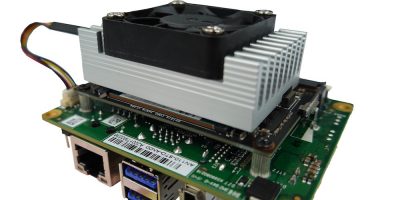Believed to be the first smart camera powered by deep learning technology, the In-Sight D900 camera enables a vision system for inline factory inspections. Deep learning, a type of AI is examples-based in that it leverages neural networks which use labelled images to understand the nature of an object. This examples-based approach to solving inspection challenges can be continually improved by feeding the existing algorithm with more example image data. This new data then enhances the system leading to more accurate results.
Manufacturers still rely on human inspectors throughout the production process because traditional machine vision systems cannot handle the complexity or variability within certain tasks. Humans however can be prone to inconsistent results, or can tire over the course of an eight hour shift and some areas of production are uninspected for one reason or another, says Cognex.
A vision system with integrated AI, for example, is able to combine the judgement of a human inspector with the robustness and consistency of an automated solution for inspection or quality control, explains Cognex of its smart camera, In-Sight D900.
The compact design embeds Cognex´s deep learning software, known as In-Sight ViDi, inside an industrial-grade smart camera. The In-Sight D900 industry-grade smart camera can be installed and deployed on the line without the need for a PC. The modular, IP67-rated vision system includes field-changeable lighting, lenses, filters and covers that can be customised to match the individual application requirements.
There is a range of options for adaption to individual applications. Firstly, there is the high dynamic range (HDR+) imaging which creates evenly exposed images, and there is an LED indicator which allows pass/fail monitoring at a distance. Inspection results can be stored locally on an SD card. The embedded inference engine was added to specifically run deep learning applications.
The In-Sight D900 works with the familiar and easy-to-use spreadsheet user interface which simplifies application development and factory integration. Application engineers have access to the full suite of traditional machine vision tools, like PatMax, edge finders, and measurement tools. There are three deep learning tools which all aim at specific and widespread applications: ViDi Read, ViDi Check and ViDi Detect. These new deep learning-based inspection tools help factory automation customers easily solve applications that are too time-consuming or complex to deploy with traditional, rule-based machine vision tools, explains Cognex.
For all three application tools, users can take advantage of the intuitive In-Sight spreadsheet interface allowing for a fast set up of deep learning applications without programming. The spreadsheet simplifies application development and streamlines factory integration with a full I/O and communications function set. It also allows the combination of traditional Cognex rules-based vision tools (like PatMax Redline) and deep learning tools in the same job.
Cognex points out that In-Sight ViDi requires smaller image sets and shorter training and validation periods than other deep learning solutions, for quick and easy set-up, teaching and deployment of applications.
With the In-Sight ViDi Read tool, the user is able to solve challenging OCR applications in minutes. This module deciphers badly deformed, skewed, and poorly etched codes using optical character recognition.
With the In-Sight ViDi Read tool, the user is able to solve challenging optical character recognition (OCR) applications in “next to no time” says Cognex.
The deep learning pre-trained font library ensures immediate use. The user simply defines the region of interest and sets the character size. In situations where new characters are introduced, this tool can be retrained to read application-specific characters that traditional OCR tools are not able to decode, says the company.
For verifying assemblies and part location, the ViDi Check tool allows manufacturers to perform fast and accurate assembly verification. The system is able to detect complex features and objects. It verifies whether parts and kits are assembled correctly based on their location within a user-defined layout. The tool can be trained to create an extensive library of components, which can be located in the image even if they appear at different angles or vary in size.
The ViDi Detect tool analyses complex defect detection tasks. It finds defects and other unwanted variations. It is able to learn from images of good parts in order to identify defective parts. In-Sight ViDi Detect is ideal for finding anomalies on complex parts and surfaces, even in situations where defects can be unpredictable in their appearance.
The In-Sight D900 can be used across a range of industries including automotive, consumer electronics, consumer products, packaging, food and beverage, medical devices, and logistics.
Cognex designs, develops, manufactures and markets products that incorporate sophisticated machine vision technology. Products include 3/4 barcode readers, machine vision sensors and machine vision systems that are used in factories, warehouses, and distribution centres around the world to guide, gauge, inspect, identify, and assure the quality of items during the manufacturing and distribution process.
http://www.cognex.com







